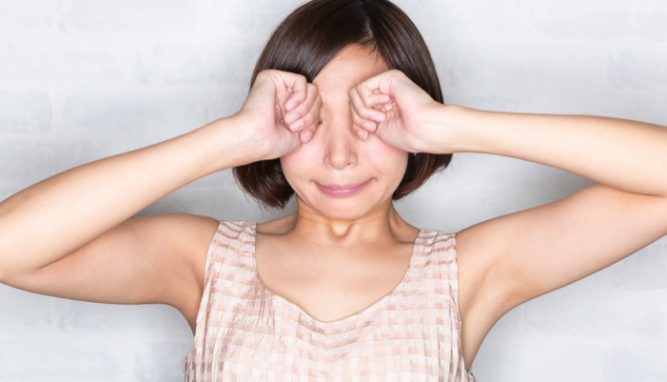In a recent issue of Cataract & Refractive Surgery Today, a magazine for ophthalmologists, a cornea specialist from Paris hypothesized that eye rubbing is the cause of keratoconus.

This argument is contrary to the more popular theory that KC has a genetic basis as well as a biomechanical dysfunction that results in weakening of the cornea.
Damien Gatinel, MD argues that the spectrum of presentation of KC (one eye usually worse than the other, different rates of progression, etc.) can be explained away by the variable way a person rubs his or her eyes and sleeping positions causing compression against objects like the mattress or pillow. Structural changes to the cornea, Gatinel proposes, are initiated and then aggravated by the mechanical force of eye rubbing. On a cellular level, the rubbing action releases proteinases in the stroma that trigger cornea thinning.
In his theory, repeated mechanical injury from eye rubbing reduces the capacity of the cornea to maintain its structure.

At this point, a corneal deformation is present and the characteristics of KC are detectable.
Gatinel admits that his theory is contrary to the views held by most experts. He concludes, “I may sound like a heretic, but it is also important to acknowledge that, as long as exact genetic and biomolecular pathways are not established, the current concept remains an unproven assumption as well.”
While there are abundant theories as to why some individuals get KC, most doctors support the idea that KC is a disease with some hereditary and some environmental factors in play.

Dr. Francis Price, MD, of the Price Vision Group in Indianapolis has been treating KC patients for more than 35 years. He proposes, “In my experience, eye rubbing is often associated with KC. Continued eye rubbing can negate the effects of both corneal transplants and crosslinking and, importantly, it is the one thing people can change (by not rubbing) that can influence the progression of the disease.”

Dr. Stephanie Campbell, OD who conducts KC research and treats patients in the UK agrees. “I do believe that eye rubbing is undeniably associated with KC, and I have no doubt that eye-rubbing accelerates the progression of the condition.” However, she believes that KC patients have a biomechanically weak cornea structure and believes they have inherited an “unfortunate pattern of genes”. To demonstrate, she notes that in the majority of cases, eye rubbing is triggered by an itch caused by the release of histamine. “Patients with KC often have significant atopy – they suffer from asthma, eczema and hay fever. We know that because there are more inflammatory proteins found in the tears and in the corneas of patients with KC, in particular antibodies that are completely in line with allergic conditions. Clearly, eye rubbing doesn’t cause allergies in the rest of the body, so there is an undeniable link here.”

